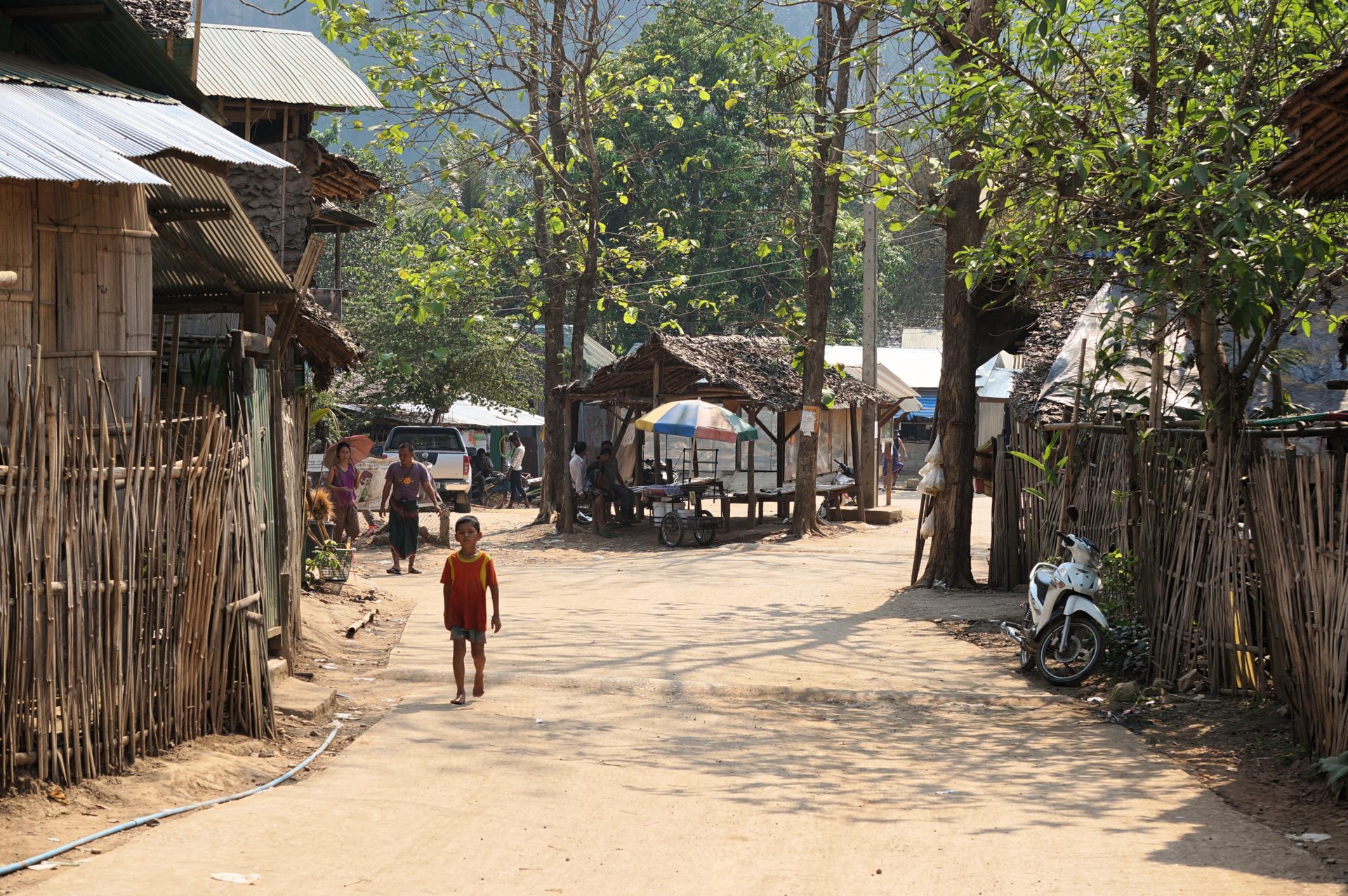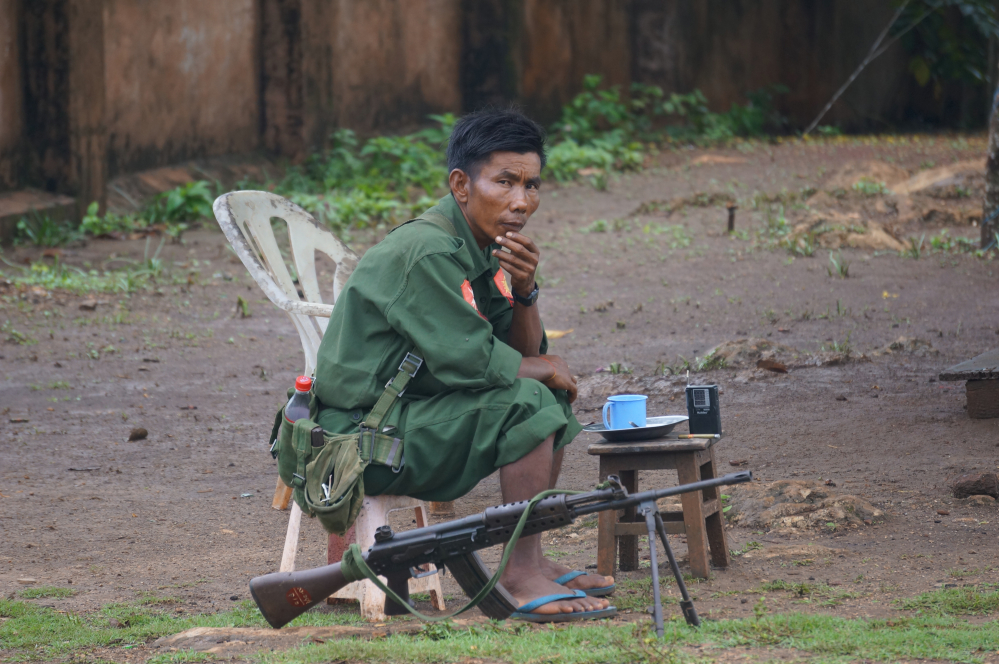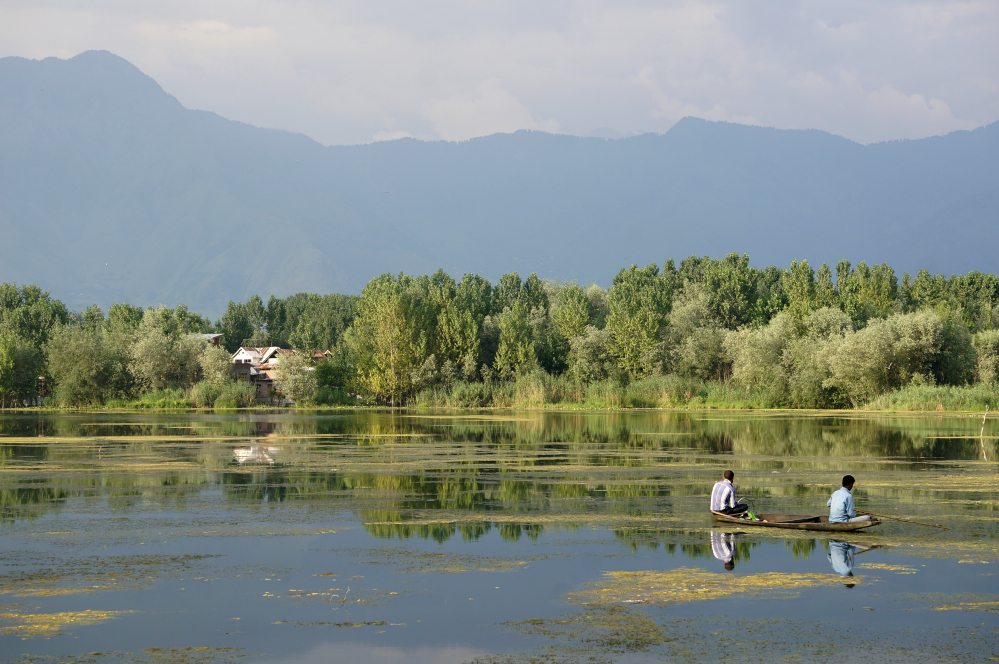When I arrive in Mae Sot it is very easy to find people willing to help me. Most of the accommodation options and bars and restaurants are located on the main drag. It doesn’t take long for me to pick out a foreign aid workers and join them for a beer. It is explained to me that it will be difficult to get entry into Mae La camp as the camp perimeter is patrolled by the Royal Thai Army checking people for the right accreditation to enter. I decide to try anyway.
I catch public transport to Mae La: a pick-up truck where the passengers sit in the tray. I start to see how big Mae La actually is when we pass alongside it. I watch a hillside dotted with palm tree roofs for 5 minutes before I decide to hop off the bus and enter the camp through an open door in the border fence. The people of Mae La are predominantly Karen, (84% according to The Border Consortium statistics) who, to a foreigner, don’t look too dissimilar to the local Thai population. But there are people of other ethnicities from Burma in Mae La too, such as the Burmans, Mons, and Karennis. People are curious as to who I am and what I am doing, so I tell them I am looking for the football field. I am offered a lift on a motorbike to the top of the camp by a young Karen man, which I accept. We fly across rickety bridges and up narrow alleys, mud squirting out the side of the tyres. Mae La is a bustling village of shops and houses and NGO offices. Within the wooden fences that encircle the ‘camp’ there is a hospital and a football field and markets and bridges and motorbikes and chickens and dogs and thousands of people leading what seem to be normal lives. The buildings are wooden with palm tree leaves. I have begun to think of these structures as ‘camp architecture’, but my later travels through the Kayin state in Burma will teach me that this is the architecture of many of the Karen villages.
Mae La Camp was originally established in 1984 at the Thai border town of Mae La following the fall of the main Karen National Union base. At the time, it had a population of 1,100 people. In 1995, Mae La was consolidated as the main camp in the area and its population increased dramatically as a result. There are now 40,385 residents in Mae La, according to The Border Consortium (TBC) statistics. It wasn’t until 2005 that the Thai government gave approval for resettlement opportunities to be offered to camp residents. As of December 2013, 26,864 persons had been resettled from Mae La to third countries. In June 2013, the US embassy announced that the resettlement program would be closing. Nowadays, only family reunification cases are applicable for resettlement.
Mae La camp is run by a mixture of NGOs, community based organisations, and camp leaders elected from the local residents. TBC provides services for the residents such as a food and cooking fuel programme, nutrition programme, shelter and settlement programme, community agriculture programme, and entrepreneurship development programme. There are also health programs, psychosocial services, water and sanitation services, sporting programs, protection services, and a camp mediation and arbitration tribunal. Mae La has educational opportunities for refugees and is considered a centre of study. Several thousand students come to Mae La to study from Burma and other camps in Thailand. The camp has mobile phone coverage and is connected to the mains electricity grid so certain areas of the camp have 24-hour per day electricity.
Mae La appears a permanent fixture; however the word ‘camp’ exposes its transitory nature. The residents of Mae La are being prepared to return to Burma. In theory, this is the ideal situation: resolve domestic conflicts and return refugees to their homes without the need for third country resettlement. However, the recent failures of ceasefire agreements in Burma is concerning. How safe will these people be when they are returned to Burma and will renewed conflict see them displaced once again?
After spending an afternoon walking around Mae La, I leave the camp through the main exit without any problems.



